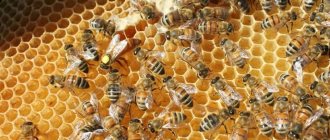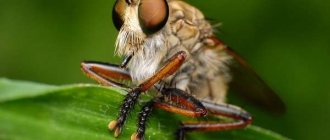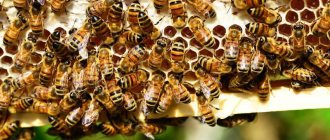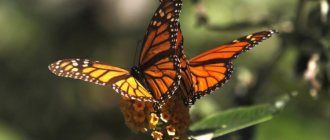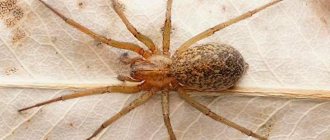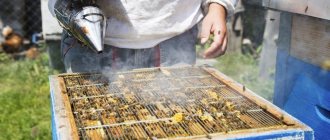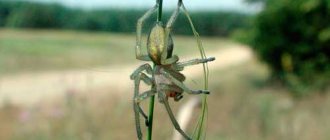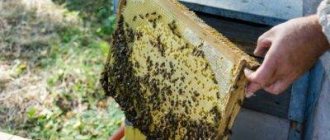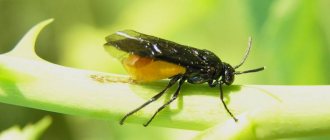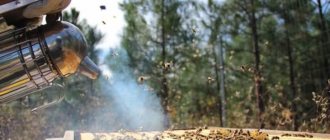Outwardly, all bees are similar, but in fact there is a strict classification of these insects. Breeds of bees with descriptions and photos will help you not only distinguish between these beneficial insects, but also learn how to choose the right species depending on the climatic conditions of the region.
Recommendations for choosing the best breed, as well as descriptions of the most popular species for temperate climates, can be found in this article.
How to choose bees
Bees are hymenopteran insects and are used to produce honey and other products. South Asia is considered the birthplace of insects, and from there these insects spread throughout the world.
A characteristic feature of this species is that it lives in families consisting of a queen, several tens of thousands of worker individuals and several hundred (or thousands, in large families) drones. It is noteworthy that in the summer the number of worker bees increases, and in winter it decreases significantly.
Note: The only full-fledged female in the family is the queen, who lays eggs in the warm season. Drones, workers, and new queens are subsequently hatched from them. Interestingly, the life expectancy of the queen directly depends on the number of worker bees in the colony. If there are only a few of them, the queen will live no more than three days, but in large families one queen can live up to five years.
As a rule, after two to three years, the queen’s egg production sharply decreases, so she is replaced by a younger individual. A productive queen lays up to 2.5 thousand eggs per day, and during the season this figure can grow to 200 thousand.
The queen almost never leaves the hive. The only exception may be the period of swarming and mating. In addition, if a queen from one family meets another, a fight will certainly break out between the insects, and the stronger and more dexterous representative will win.
A characteristic biological feature is the ability to reproduce not only within the family, but also with other families. This process is called swarming.
Worker bees are only females, who, due to underdeveloped reproductive organs, cannot mate and lay eggs. It is these females who perform all the work in the hive: collect nectar and pollen, produce honey, build honeycombs, feed the larvae and the queen, and also guard the hive and monitor the optimal temperature conditions in it. Under natural conditions, workers independently replace the old queen with a young one.
Note: Sometimes, if there is no queen in a colony for a long time, some worker insects may begin to lay eggs. But since they are not fertilized, only drones hatch from them.
The lifespan of worker bees depends on the time of their hatching: summer bees live no more than 45 days, and autumn ones - up to 10 months. In addition, they are divided into two groups. Flightless (young) are almost constantly in the hive, and fly out of it only in good weather. Flyers are responsible for collecting pollen and nectar.
Figure 1. Visual differences between insects and classification of worker bees
Drones are males whose sole function is to fertilize the uterus. That is why they have well-developed genitals, but do not have organs for collecting pollen and secreting wax. Each colony contains several hundred or even thousands of drones, although the queen mates with only a few (usually 6-10 individuals). Drones reach sexual maturity at the age of 8-14 days, and after that they can not only mate, but also leave the hive, flying away from it to a distance of several kilometers. Figure 1 shows the main visual differences between the queen, workers and drones.
Note: Drones only live in the summer, as worker bees drive them out of the hive in the fall. Sometimes, if there is no queen in the family, some drones remain in the hive for the winter.
Interestingly, all insects go through the same stages of development, but they differ in duration depending on the type of insect:
- In the first stage, the “egg,” all insects develop in the same way: three days;
- The second stage, “larva before sealing,” lasts 5 days for the queen, 6 days for worker bees, and 7 days for drones;
- The last stage of development, "larva and pupa in a sealed cell", lasts 8 days in the queen, 12 in worker species and 14 in drones.
Accordingly, the development cycle of an adult insect is: 16 days for the queen, 21 days for workers, and 24 days for drones.
These are quite hardy insects. They can carry a load through the air, the mass of which corresponds to half the weight of the individual itself, and are capable of reaching speeds of up to 60 km/h. In addition, they have developed vision. They have five eyes (two on the sides and three on the crown), which distinguish objects by shape and color. Insects have a well-developed sense of smell, which allows them not only to distinguish flowers, but also to find the location of the hive. If bees sense danger, they may sting. Single bites are not dangerous, but multiple bites can cause severe allergies. That is why beekeepers use special protective clothing when working.
What to pay attention to
There are four main types of these insects: giant, dwarf, Indian and honey. Only the latter type is bred in homesteads, since it is this type that produces honey.
When selecting bees for breeding, several factors should be taken into account:
- Climate: most insects are adapted only to certain temperature living conditions. For example, Central Russians tolerate cold well, while Italians tolerate hot climates;
- Productivity: the ability of the queen to lay the maximum number of eggs directly affects the survival of the family;
- Nectar collection and honey production: Anatomically, some insects have longer proboscis, which allows them to collect nectar from more plants.
Figure 2. The most productive species: 1a and 1b - Italian, 2a and 2b - Ukrainian steppe.
You should also take into account the tendency of insects to swarm, since during this period their honey production decreases. Italian and Ukrainian steppe are considered optimal for breeding (Figure 2). Such species are highly productive and calm in nature, but require additional care in winter and protection from diseases.
In addition, there are many breeds, each of which has its own distinctive characteristics.
Peculiarities
Insects are not artificially bred, and only those types that are characteristic of a given climatic zone and have already managed to adapt to living conditions are grown for breeding.
Figure 3. Representatives of the breeds: 1 - Central Russian, 2 - gray mountain Caucasian, 3 - yellow Caucasian, 4 - Ukrainian steppe (uterus)
For our country, the following types are considered the best (Figure 3):
- Central Russian: fairly large insects of dark gray color. The queen is highly productive, and the honey-bearing capacity is average. During the season, you can collect no more than 30 kg of honey from one family. Representatives of the species are conservative in nature and have difficulty switching to new honey-bearing areas. In addition, they are quite aggressive, but are highly resistant to cold and disease.
- The Caucasian mountain gray is smaller and lighter than the Central Russian one. In addition, the queen is not highly fertile, and the workers are not honey-bearing. From one family you can collect no more than 29 kg of honey per season. However, these disadvantages are fully compensated by their advantages: they productively use poor sources of honey collection, easily switch to new areas, have a peaceful character, and thanks to their long proboscis they can collect nectar from a much larger number of plants than representatives of other species. In addition, they are weakly susceptible to swarming (no more than 5% of individuals from a family), so in the summer the fertility of insects practically does not decrease. However, they are very sensitive to cold and putrefactive diseases. Nevertheless, it is precisely this that has become widespread not only in Russia, but also abroad.
- The yellow Caucasian is similar in size to the gray mountain, but slightly exceeds it in fertility. The insects are gray with bright yellow stripes. Quite peaceful, characterized by average playfulness, tolerate hot and dry climates, but can attack other families and are sensitive to diseases. At the moment, the yellow Caucasian is gradually being absorbed by the gray mountain.
- The Ukrainian steppe was transformed from the Central Russian one, adapting to southern living conditions. Representatives are smaller in size than Central Russian ones, but they also have a much longer proboscis, which has a positive effect on productivity. In addition, Ukrainian steppe species are distinguished by their high honey production (up to 40 kg per family per season), resistance to temperature changes and diseases.
- The Carpathian is in many ways similar to the Ukrainian steppe. The only difference between insects is that the Carpathian ones have a much longer proboscis. They are distinguished by average leafiness and winter hardiness and an exceptionally peaceful character (Figure 4).
- Representatives of the Italian breed correspond in size to the Central Russian ones, but are significantly superior to them in fertility. A distinctive feature is its golden color with bright yellow stripes. They have a peaceful nature, use a variety of types of plants very well to collect nectar, but do not have sufficient resistance to cold and disease.
- Krajinskaya was brought from Austria. They are distinguished by their gray color with a silver tint. Fertility is average, but insects are characterized by rapid spring development. They make excellent use of various sources of honey collection, but their resistance to cold and disease is average.
- The Far Eastern ones were formed through the process of mutation of insects representing several species. Due to this, they are distinguished by their small size, gray color and low fertility. Despite their high tendency to swarm, insects are peaceful in nature and can use the earliest plants to produce honey.
Figure 4. Breeds: 1 - Carpathian, 2 - Krajina, 3 - Italian, 4 - Far Eastern
When selecting insects for breeding, be sure to take into account the climatic characteristics of the region, since most species are very sensitive to cold and require additional care in winter. More detailed information about the most popular Italian breed in the world is given in the video.
Rules
Finding a purebred bee, unfortunately, is quite difficult, since so-called hybrids are bred in most apiaries. But, if you have clearly set yourself the goal of choosing the best breed based on photos and descriptions, we recommend using some useful tips.
Among the basic selection rules are:
- Assessment of appearance: each breed is formed under the influence of certain climatic conditions, therefore insects of different species are radically different from each other in appearance and size.
- The climatic conditions in which the apiary will be located also play an important and sometimes decisive role. For example, Italian ones can be bred in warm climates, but they are not suitable for temperate and cold climates, as they are not winter hardy.
- The peaceful nature of insects is an important criterion for novice beekeepers. For example, representatives of the Caucasian will bring honey even if the beekeeper accidentally damages their nest, and the Central Russians have a rather aggressive character.
To make it easier for you to choose a breed for your apiary, we present the names, photographs and descriptions of the most popular species.
How to determine the breed of bees: video
You can learn to identify bee breeds with the help of a video. Its author talks about the characteristics of certain types of insects and the criteria by which they can be distinguished.
Appearance
The queen bee differs in appearance from ordinary worker bees:
- the abdomen is approximately 1.5-2 times longer compared to the worker bee, which is due to the developed reproductive function; it protrudes much beyond the wings - this is clearly visible in the photo of the queen bee;
- the weight is increased: 180-325 mg in the fetal one, 170-220 mg in the infertile one. If the average body length of the queen is 18-25 mm, then the working individual is 12-14 mm, and the drone is 15-17 mm;
- if the queen is infertile (not fertilized by drones), then she runs very fast and may fly away upon examination. The fertilized queen bee moves slowly and is always surrounded by nurse bees.
There is no specific way to quickly find the queen bee. In nurseries, queens in bee packages are marked with different colors on their backs: a specific color is chosen for the last digit of the year.
Important! Professionals do not look for the queen unless absolutely necessary, but determine her presence by the presence of one-day seeding in the hive. If necessary, they look for the uterus near the same frames. The absence of a queen can be determined by the loud high-pitched buzzing sound (“crying”) that bees make in an orphaned hive. What a queen bee looks like against the background of working bees can be seen in numerous videos and photos.
Breed of Karnika bees and their characteristics
The description of carnika bees primarily concerns subspecies or strains. There are four of them: carnika, Italian, Caucasian and dark forest.
Regardless of the strain, all insects of this species are characterized by high productivity and low feed consumption, therefore they tolerate winter well even in lean years.
The insects are gray, with small patches of yellow, the body is short and covered with numerous villi, which makes the insects look shaggy.
Characteristics of carnival bees include the following indicators (Figure 5):
- High productivity allows you to get honey even from a weak harvest;
- The peaceful nature allows the beekeeper to work with insects even without protective clothing;
- Economical consumption of feed increases survival in winter, and the family will collect honey even in the absence of a queen.
Figure 5. Features of karnik bees
Among the disadvantages are the late appearance of brood, especially in warm and long autumn conditions, as well as low productivity during the second bribe. This feature is due to the fact that bees spend almost all their energy on the first bribe.
The role of the queen in the bee colony
The orphaned family tries to breed a queen as quickly as possible, since the strength and productivity of the bees depends on her presence. While the functioning queen is present in the hive, the workers rub their bodies against her and spread her special smell, which tells other insects: everything is fine, the life of the family is not in danger, sowing continues.
However, in the event of the death of the queen, the bees lose the meaning of existence and begin to worry, gradually reducing the amount of food they bring, as well as performing other necessary work with less zeal: building combs, raising brood, guarding the hive, cleaning, etc.
Important! A weak colony without a queen may even die, since at the right moment it will find itself without worker bees. Therefore, during inspections, the beekeeper always checks for the presence of a queen in the hive.
Buckfast bee breed and their characteristics
A description of the Buckfast bee breed and their characteristics will help to objectively evaluate all the pros and cons of the species, and decide whether it is worth breeding such insects in the apiary.
Firstly, it should be taken into account that the breed was bred by breeders, and it is based on Italian bees, therefore all subspecies of buckfast have a characteristic yellow color. Despite the components of the hybrids, all insects of this species have some common features (Figure 6):
- Insects practically do not swarm, but at the same time they produce a fairly large amount of brood. Moreover, it is not recommended to limit family growth, as this may negatively affect honey yield.
- Insects collect little propolis, since the Egyptian breed was used to create the hybrid;
- They are distinguished by a calm character and do not show aggression when the beekeeper works with the hive.
Figure 6. External characteristics of buckfast bees
In addition, the queens of this breed are highly fertile, and the insects themselves have excellent endurance, so in most cases they tolerate wintering well. However, these insects are not suitable for northern regions due to their insufficient frost resistance.
Carpathian bee: description
The Carpathian bee, or karpatka, stands out among other breeds by its early flight, that is, insects begin to collect nectar much earlier than other species. In addition, honey collected by representatives of the Caucasian species contains little sugar, and the insects themselves tolerate wintering well (Figure 7).
Figure 7. Carpathian breed
Among the advantages of carpathians are their peaceful nature and high productivity. In addition, they tolerate winter well, practically do not swarm and get sick little. But their winter hardiness is low, so the Carpathian breed is not recommended for breeding in the northern regions.
Central Russian breed: characteristics
Central Russian bees are considered one of the largest. They have a dark gray body color without yellowness (Figure 8).
Figure 8. Features of Central Russian bees
They have high productivity, resistance to cold and disease. However, insects are quite aggressive in nature, and when working with them it is imperative to wear protective clothing. This breed is recommended to be bred in the northern regions, since in the south they swarm heavily and significantly reduce productivity.
Comparative table of varieties
| Breed | Main features | ||||
| Coloring | Proboscis length, mm | Wing length, mm | Discoidal offset | Body weight, mg | |
| Abkhazian | Silver | 6,3-6,8 | Negative | 90 | |
| Asian | Yellow-black | 4 | 6 | ||
| African | Dark gray, bright yellow | 5,45-7,04 | 8,2-9,5 | 110 | |
| Central Russian | Dark gray | 5,9-6,4 | 9,35-9,5 | Negative | 110 |
| Italian | Golden yellow | 6,4-6,7 | 9,31 | 113-210 | |
| Carpathian | Light gray | 6,5-6,7 | 9,33 | Positive | 210 |
| Krajina (Karnika) | Silver gray | 6,4-6,8 | 9,26 | Negative | 110 |
| Ukrainian | Light gray | 6,3-6,7 | Positive | 105-200 | |
| Far Eastern | Gray or gray with yellow | 6-6,8 | 8-9,3 | Neutral | 105-230 |
| Buckfast | Dark yellow | 6,8 | 9,5 | Positive | 110-210 |
Caucasian breed
The Caucasian breed includes many subspecies, which, although they have some differences, still have some common features (Figure 9).
Note: The diversity of subspecies is explained by the fact that they formed in different climatic conditions. For example, valley Caucasian ones can collect honey even in extreme heat, while high mountain ones can collect honey when the temperature drops to +6 degrees.
A distinctive feature of the breed is its high flight duration. Bees leave the hive early in the morning and return late in the evening, which allows them to collect a fairly large amount of honey. In addition, the nectar collection period lasts from early spring to late autumn, which allows us to consider the breed one of the most productive.
Figure 9. External features of Caucasian bees
Also, Caucasian bees easily adapt to different weather conditions and produce a lot of propolis, which is used to insulate nests for the winter. Despite these features, insects do not tolerate wintering well, so the main task of the beekeeper is to properly prepare the hives and provide the insects with sufficient food. In addition, they often get sick and are very sensitive to dampness.
Instead of a preface
How many beekeepers know that the average honey bee has 25 geographic races and an incredible number of breeds? A competent beekeeper should know, if not all, then at least those that are found in his region. In this article we tried to collect the most common types of bees with photos, names and descriptions.
Varieties consist of physiological characteristics:
- color;
- size;
- length of the proboscis (an important characteristic affecting pollination and nectar collection);
- the number of wax glands (affects wax productivity);
- the number of tubes in the ovaries (which directly determines egg production), etc.;
Italian breed: photo
A characteristic feature of Italian bees is their unusual bright yellow body color, by which they can be easily distinguished from others (Figure 10). The queens are highly fertile, and insects have high resistance to disease and a fairly peaceful nature.
Figure 10. What the Italian breed looks like
They are highly productive, and during the honey harvest period they easily switch from plants that contain less nectar to those that have the opportunity to harvest a more abundant harvest. Insects secrete a lot of wax, but do not survive wintering well due to their low resistance to cold. That is why Italian bees are recommended to be bred only in the southern regions.

